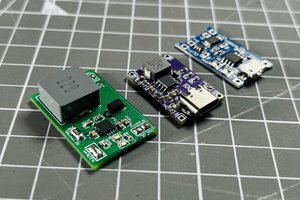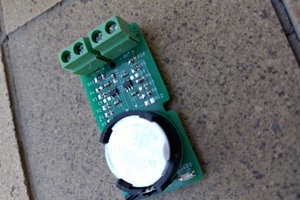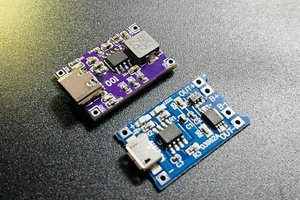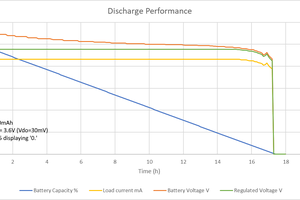Supplies:
Perf board or fabricated PCB
arduino Nano
Power resistors 10W - 7.8 Ohm
Shunt Resistors 10W - 0.2 Ohm
OLED screen
filter capacitors - 100nf - (code 103) - to smooth out the input readings
N-channel MOSFET - logic level - SI2302 (SMD)
PINOUT :
A0 - Analog read for battery voltage
A1 - Analog read for shunt voltage
D9 - mosfet gate driver
A4 - SDA for LCD
A5 - SCL for LCD
Vcc - Power in
Gnd - common to arduino and battery negative
100nf caps at the A0 and A1 for smoothening of the analog values
R1 to R8 are resistors in parallel. You can put a single power resistor in its place.
R9 and R10 are shunt resistors in parallel. You can use any one or both to get the desired resistance.
Working Principle
Capacity of any battery is measured in mAh(milliamp hours) or Ah (Amp Hours) depending on the size of batteries, lead acid battery or lithium ferrous phosphate (LiFePO4) battery capacities are mentioned in Ah while for lithium based small batteries its mentioned in mAh.
Capacity of a battery is the amount of power it can deliver from full charge to full discharge. So for example, a 2200mAh lipo battery means that it can deliver max of 2200mA or 2.2A for 1 hour or 2.2mA for 1000 hours.
Thus for us to calculate the total capacity of a battery we need to calculate the current consumed over a time period.
Total capacity (Q) = amps * hours or Q = mA * 1000 * Hours
Using arduino, calculating current is not possible directly, but we can calculate the voltage using the analog input pins. Then we can get the current (I) using the ohm's law.
Here, we will calculate the voltage drop across the known resistance (shunt) to get the current and use it for calculating the capacity.
V = I * R so I = V / R ( Ohm's Law) - I is current is amps, V is volts , R is resistance in ohms
But, for any battery chemistry the voltage does not remain constant while the battery is discharging, thus the voltage will gradually decrease over the time of discharge. So we need to check the voltage of the battery every second at least to get a decent accuracy of the total capacity. As the voltage will slowing decrease, so will the current.
Thus, we have to calculate the current every second and use that current value to get our capacity of every second. i1 = voltage drop / shunt resistance -- current at each second In arduino, time is calculated in milliseconds thus we need to convert this milliseconds to hours. so 1 millisecond - 1/3600000 hours. We are calculating the current every second (1000 milliseconds). thus q1 = current * time (i1 * time passed) - this is the capacity calculated for first second of the discharge process of the battery. Likewise we need to calculate the q2,q3,q4...qn till the end of the discharge process. for LiPo cell the max voltage is 4.2 volts and minimum safe voltage is 3.2 or 2.9 volts. So we need to calculate the capacity used each second till the voltage reaches to minimum and then add all the individual capacity to get the final total capacity. Q = q1 + q2 + q3 + q4 + .. + qn.
Here, I have taken shunt resistance of 0.2 ohms. To limit the current to around 500mA when voltage is max at 4.2V, I have connected in series resistance of 7.8 ohms, thus getting the total resistance of 8 ohms. R = V / I , R = 4.2 / 0.5 = 8.4 Ohms -- ideally to get 500mA current draw resistance should be 8.4 ohms so, current @ 4.2V = 4.2/8 = 525 mA (I=V/R) - when the voltage is max and batteries are fully charged. Current @ 3.2V = 3.2/8 = 400 mA Also all the resistors are power resistors capable of dissipating power of at least 5 Watts, 10W rated are optimal. power = V*I = 4.2 * 0.525 = 2.2 Watt - max power to be dissipated by the resistors. power = V * I = 3.2 * 0.4 = 1.28 Watt As a side note, if you do not have power resistors you can use 1/2W resistors in parallel. Five 1/2W 40 ohm resistors will give you a effective resistance of 8 ohms and then you can add a suitable shunt resistor in series to them....
Read more » puneet1984
puneet1984
 Sagar 001
Sagar 001


 George
George